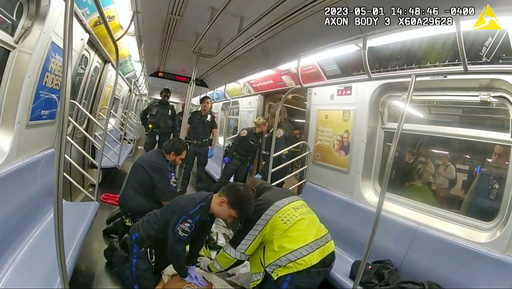
NEW YORK — The incident involving Daniel Penny, who fatally choked a homeless man on a Manhattan subway last year, has drawn significant attention, with testimonies revealing that Penny employed a combat technique he learned during his service in the U.S. Marines. According to his martial arts instructor, Joseph Caballer, Penny’s actions turned a standard chokehold into a dangerous maneuver when he did not release his grip after the man lost consciousness.
Caballer testified, “Once the person is rendered unconscious, that’s when you’re supposed to let go.” This statement came during the proceedings of Penny’s trial, where he faces manslaughter charges stemming from the death of Jordan Neely, a homeless man and Michael Jackson impersonator, who was in a precarious state when Penny intervened last May.
Neely, who had a history of mental health challenges and substance abuse, was reportedly making alarming remarks to fellow passengers when Penny, a Long Island native and four-year Marine veteran, took him down. Video footage captured Penny restraining Neely by pressing his bicep against the man’s neck and applying pressure with his other arm for nearly six minutes, even after Neely became unresponsive.
According to Caballer, this technique, intended to be a “blood choke,” is meant for quickly subduing an attacker, but only when it is not prolonged. When questioned by prosecutors about whether Penny would have known that restricting airflow for such a duration could lead to fatal consequences, Caballer confirmed, “Yes.” He further explained the risks by saying that before engaging in such techniques, it is emphasized that holding on too long could cause serious harm or death, likening the feeling of breath restriction to “trying to breathe through a crushed straw.”
Defense counsel for Penny contends that he intended to merely restrain Neely rather than applying excessive force throughout the encounter. They are also questioning the medical examiner’s conclusion regarding the chokehold as the cause of Neely’s death, suggesting that his underlying health issues and drug use played significant roles.
During cross-examination, Caballer admitted he could not definitively ascertain the pressure exerted just by observing the video. However, he noted that it appeared Penny may have been compressing air flow to Neely’s neck, potentially affecting one of the carotid arteries.
Caballer is among the last key witnesses expected to be called in a trial that has polarized opinions across New York City, amplifying discussions regarding the city’s handling of crime and disorder on public transit.
Outside the Manhattan courthouse, racial justice advocates have consistently manifested, calling Penny a racist vigilante who disproportionately reacted to a Black man with a mental health crisis. In contrast, many conservatives have hailed him as a protective bystander utilizing his military training to safeguard fellow passengers. After Neely’s death, U.S. Representative Matt Gaetz, recently nominated by President-elect Donald Trump for Attorney General, referred to Penny on social media as a “Subway Superman.”
